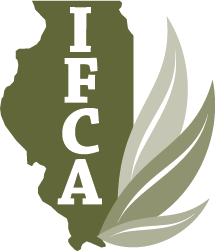Dicamba Labels and Endangered Species Counties
With new registrations being issued for the use of dicamba over soybean this past October, one of the main points we emphasize for anyone applying these products in 2021 is ensuring compliance with the listed requirements of the federal labels. One of the requirements in the labels to pay close attention to deals with downwind buffers.
There are two downwind buffers listed in the new labels. One is a 240 ft downwind buffer to protect sensitive areas. The second is a 310 ft downwind buffer in counties that are deemed as having endangered species (in addition to a 310 ft downwind buffer, an additional 57 ft buffer on all other sides of the field is required). The pesticide labels require that you “Consult Endangered Species Protection Bulletins for ESA counties and restrictions.” The link to the Bulletins website, https://www.epa.gov/endangered-species/bulletins-live-two-view-bulletins, is provided in the labels for the applicator to visit and see which counties are highlighted and require the ESA buffers.
We feel it is important to point out that the ESA counties highlighted on the map provided on the EPA bulletins live website for 2021 have changed. For reference we have highlighted in red in this map the counties that have dicamba related endangered species in 2021. There are also a few counties that have been added to the ESA list. If you are planning on making any dicamba applications over the top of soybean this upcoming spring, please visit the EPA bulletins website and determine if you are required to implement the additional endangered species buffer.
Once at the website, look at the map provided. If you plan on making an application in a county that is highlighted, for more information on requirements for spraying in that county, simply:
There are two downwind buffers listed in the new labels. One is a 240 ft downwind buffer to protect sensitive areas. The second is a 310 ft downwind buffer in counties that are deemed as having endangered species (in addition to a 310 ft downwind buffer, an additional 57 ft buffer on all other sides of the field is required). The pesticide labels require that you “Consult Endangered Species Protection Bulletins for ESA counties and restrictions.” The link to the Bulletins website, https://www.epa.gov/endangered-species/bulletins-live-two-view-bulletins, is provided in the labels for the applicator to visit and see which counties are highlighted and require the ESA buffers.
We feel it is important to point out that the ESA counties highlighted on the map provided on the EPA bulletins live website for 2021 have changed. For reference we have highlighted in red in this map the counties that have dicamba related endangered species in 2021. There are also a few counties that have been added to the ESA list. If you are planning on making any dicamba applications over the top of soybean this upcoming spring, please visit the EPA bulletins website and determine if you are required to implement the additional endangered species buffer.
Once at the website, look at the map provided. If you plan on making an application in a county that is highlighted, for more information on requirements for spraying in that county, simply:
- Select the month you plan on spraying
- Insert the product or registration number
- Click search
- Double-click on the highlighted counties for results, and download the “printable bulletin” for your records.
One other new item is that the USEPA printable bulletins state that in calculating the downwind buffer in ESA counties, the only crops you can include in the buffer are DT soybeans or DT cotton. Corn, for example, cannot be included in the buffer. We have asked USEPA for clarification on why corn can no longer be included in the buffer in these ESA counties, but have not yet received an answer.
For more information on requirements for the new dicamba registrations and labels, please click here.
